CREATED IBIS (NIPPONIN NIPPON).
Formerly Siberia, Japan and China. Known to occur today only in one region where some 40 birds were reported in 1987.
CRESTED SHELDUCK (TADORNA CRISTATA).
No reliable clams from anywhere since 1971. Presumabl xtinct.
DALMATIAN PELICAN (PELECANUS CRISPAS).
Pakistan, China, Vietnam. In parts of the Indus Delta, some 2,900 of these
birds were recorded in January 1988. However, the eastern wintering population.
in China, Hong Kong and Vietnam is very small, with the tend count at three
sites being less
than 100. Requires urgent attention. There is no doubt that
this is a highly vulnerable species whose entire world population had been
estimated at between 665 and 1,000 pairs in 1979 (ICBP Bird Red Data Book).
All known nesting and wintering sites need to be completely protected if this
large bird that is seen as a direct competition by fishermen is to survive.

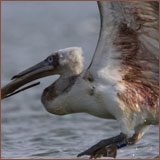
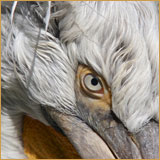
FINN’S BAYA WEAVER INDIA.
Wet seasonally flooded grasslands stood marshes in the tecai at the base
of the Himalaya. Much of this habitat under serious pressure from human activities.
Numbers small and rather patchy in distribution. Needs close monitoring and
surveys for status determination essential.
FLY RIVER GRASSBIRD (AFEGALUMS ALBOLIMBAFUS).
Papun New Gumm Restricted distribution. Floodplain wetlands of the Fly river.
Locally not uncommon but habitat degredation by feral deer is a major cause
for concern. Should be safe in areas where the deer is removed.
GIANT IBIS (Thaumatibisgigantea).
Cambodia, Laos, Thailand and South Vietnam. Rare. No reliable records in
recent years. Only some regions in Cam-bodia are believed to hold reasonable numbers and these need to be urgently
surveyed. Wetlands an wet forest clearings. Habitat
destruction, coupled with
wars have seriously affected this species an one report even suggests that
the world population o the giant ibis may be just a few hundred birds.
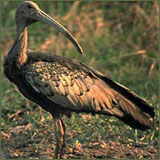
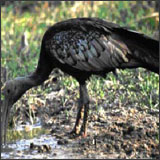

GOLIATH HERON (ARDEA GOLLATH).
Chiefly Africa, but there have been confirmed sightings from the Sunderbans
in Bangladesh. Rare. Status in Asia not clear.
GREATER ADJUTANT (LEPTOPTILOS DUBIUS).
Considered to be one of the most seriously threat ened waterbirds of Asia.
Large scale habitat destruction and persecution have proved devastating for
this giant bird. Survives in numbers only in parts of Assam. Ali breeding
sites should be strictly monitored and prorectect.
HOODED CRANE (GRAS MONARCHA).
Breeds in central Siberia. Winters in Japan and parts of Korea, and once
upon a time, to the lower Yangtze Valley in China. Wetlands and agricultural
lands, particularly paddy cultivations. Species seems to have suffered considerably
due to pesticide poisoning from agricultural lands in its wintering areas.
The bird is strictly protected in Japan and Korea where wintering areas have
been declared Special Natural Monuments. Like the other four threatened comes
of Asia, this species too has received serious attention and is today on the
verge to recovery.
OLIVE RIDLEY TURTLE (LEPIDOCHELYS OFIVACEA).
Tropical regions of Pacific, Atlantic and Indian Oceans. Commonest in the
Indian Ocean. Most of the major breeding populations, worldwide, have years,
except for two regions — two sites on the Orissa coast in India and
two in the Pacific Costa Rica/Mexico.
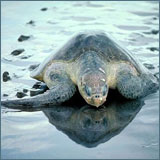 |
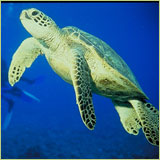 |
 |
PAINTED TERRAPIN (CALLAGURBORNENSIS).
Southern Thailand east through Malaysia and Somalia to Borneo. Estuarine
turtle. In recent years has become one of the most seriously threatened river
turtles in this part of Asia. Urgent studies and surveys needed to determine
exact status and enforce conservation measures. No information on captive
breeding.
PHILIPPINEERMODILE(CMCODYLWMINDOMNSIS).
Philippines. Critically endangered. Very small numbers, isolated and further
reducing. Very urgent protection of known sites is essential if the species
is to survive.